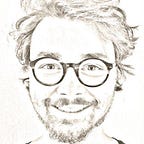What is Truth?
Tarski says we can’t define it.
‘What is truth?’, seems to be a philosophical question. The logician Alfred Tarski, however, gave a surprising mathematical answer: He proved that truth is undefinable.
What does it mean for something like truth to be definable? Logicians, like Tarski, work with formal languages, i.e., regimented languages that are used for precise formulation and argumentation in mathematics.
Such formal languages contain symbols like ‘∨’ for ‘or’, and ‘→’ for implication. For example, the statement ‘(p ∨ q) → r’ reads as, ‘if p or q, then r.’
Formulas in formal languages, just like any text, can be coded as numbers: Just like the text, you are reading right now. It is saved somewhere on a server on the internet as a long sequence of zeros and ones — it’s coded as a natural number.
For example, concerning our formal language, we could define that ‘p’ is coded as the number 1, ‘q’ as the number 2, ‘r’ as the number 3, ‘∨’ as the number 4, ‘→’ as the number 5, ‘(‘ as the number 6, and ‘)’ as the number 7.
We can then use the prime numbers to indicate the place of the symbol in the formula, and code ‘(p ∨ q) → r’ as a large number:
In fact, this is the 24-digit number 209,020,868,458,671,589,320,000.
What we are doing here is a very simple example of what is usually called a Gödel numbering. Named after Kurt Gödel, these numbers are an effective way of coding formulas as numbers.
Crucially, the coding happens in such a way that typical operations — like forming the conjunction ‘φ ∨ ψ’ from ‘φ’ and ‘ψ’ — are arithmetically definable. This means that there is a formula F(x,y) that allows you to compute the Gödel number of ‘φ ∨ ψ’ from the Gödel numbers of ‘φ’ and ‘ψ’ as input.
For any formula ‘φ’, I will write g(φ) for its Gödel number.
With these Gödel codings, we can now transform the philosophical question — What is truth? — into a mathematical question:
Is there a formula T such that T(g(φ)) is true if and only if φ is true?
If such a formula T exists, then it is a definition of truth: a mathematical formula, in the language of Peano arithmetic, that tells you whether or not a formula is true. As input, it only needs the code of the formula you’re curious about.
Tarski’s answer is to the above question is: No! It is not possible to define truth in this way. But why?
The proof is an ingenious exploitation of the properties of Gödel numberings. By the diagonal lemma, which has a simple proof but feels like magic, we can obtain a formula L such that ‘L ↔ ¬T(g(L)).’ That is: L is true if and only if the truth predicate applied to the Gödel number of L is false.
How can we get this L? As I explained above, Gödel numberings are designed in such a way that they allow for doing operations on formulas through arithmetical means. Therefore, there is a function ‘sub(m,n)’ such that whenever m is a Gödel code for a formula φ(x), then ‘sub(m,n)’ is a Gödel code for the formula φ(n) which results from replacing all occurrences of x in φ with the natural number n.
Here is the magic: Let c be the Gödel number of φ(x) = ‘¬T(sub(x,x))’. Then sub(c,c) is a Gödel number for φ(c) (replacing ‘x’ with ‘c’), so g(φ(c)) = sub(c,c). If we choose L = φ(c), then we get that L ↔ φ(c) ↔ ¬T(sub(c,c)) ↔ ¬T(g(L)).
That’s magic, isn’t it?
How does this help with showing that there can be no definition of truth? Imagine now, that T is a definition of truth, i.e. T(g(φ)) is true if and only if φ is true. Then we get a contradiction: L ↔ ¬T(g(L)) ↔ ¬L. But that can’t be true!
This ingenious proof can be found in Tarski’s 1936 paper on the undefinability of truth (“Der Wahrheitsbegriff in den formalisierten Sprachen”).
What is its philosophical impact? The proof shows that we cannot define a truth predicate within a formal language that can handle Gödel codings. However, higher-level truth predicates might be possible —but that’s a topic for another time.
If you’re curious for more stories on logic and the foundations of mathematics, check out my profile! For example, I have recently written on ‘How to Prove That There’s No Proof.’
